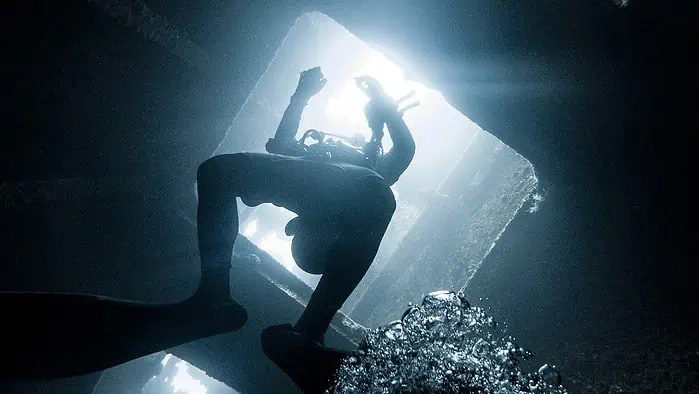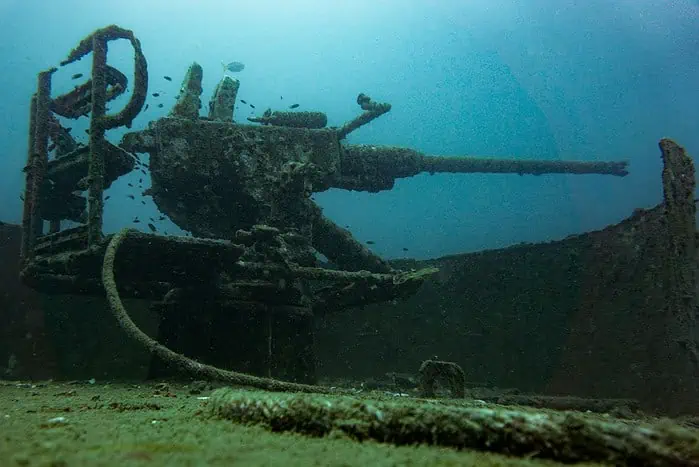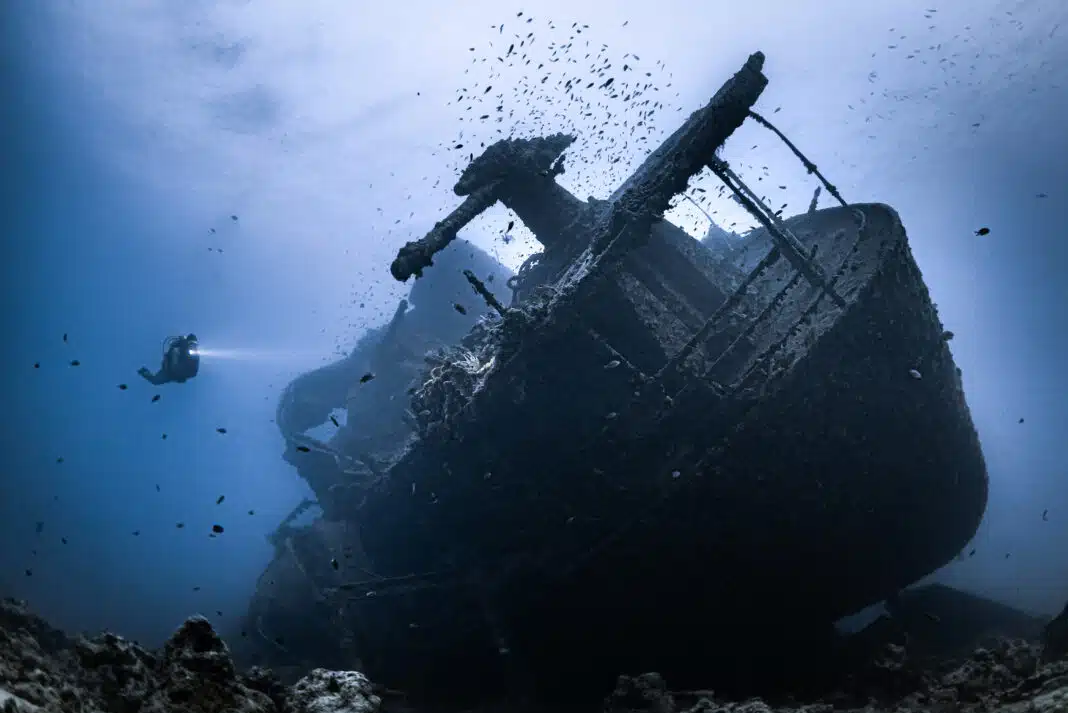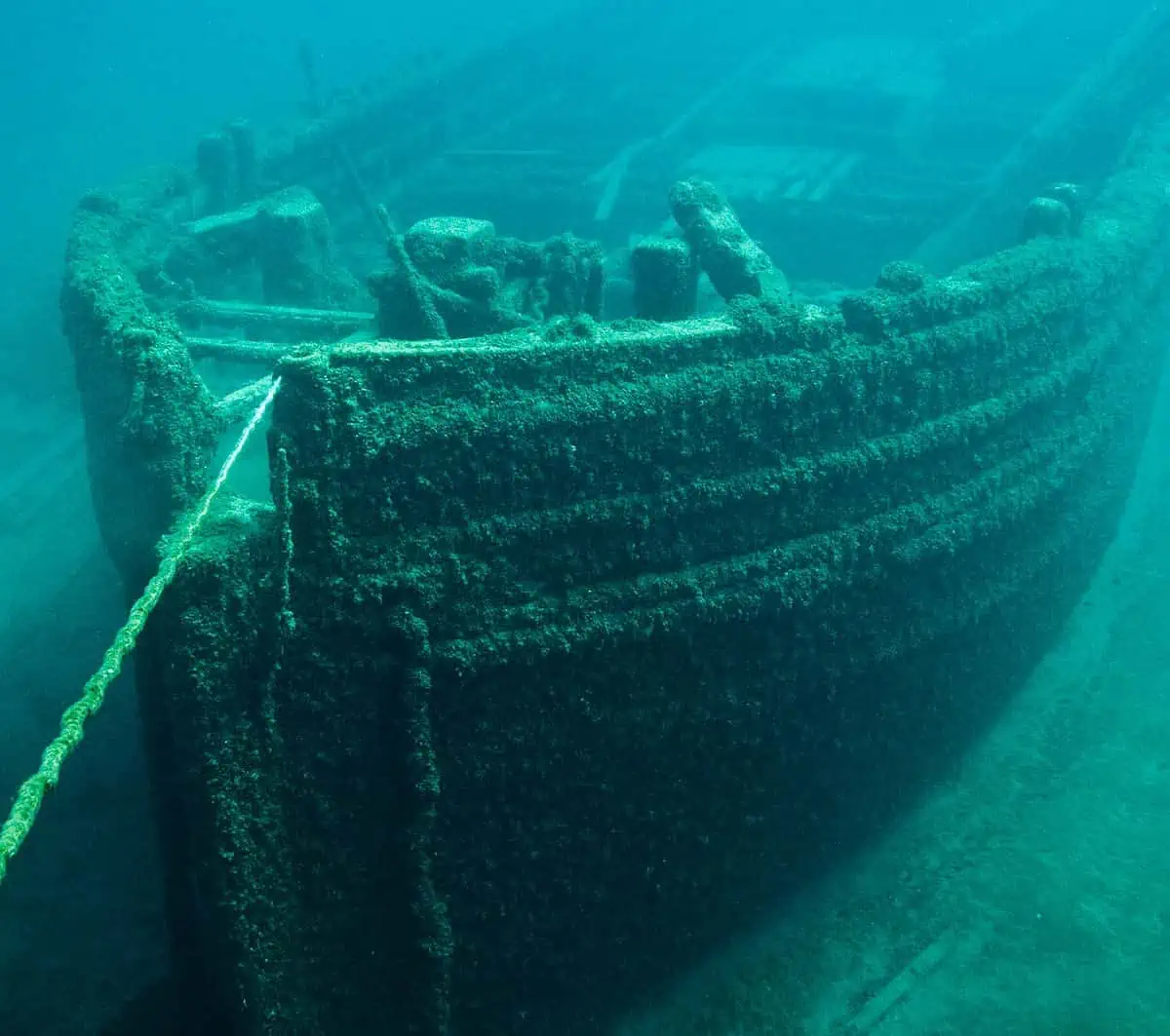Wreck diving is one of the most interesting things you can do underwater. Swimming around, you often wonder about the lives of the people who lived and worked on the wreck.
Wrecks often glimpse history and a world we no longer know.
Whether it be Roman Galleons, A WWII ship laden with artifacts, or a recent sunken fishing vessel, one thing is certain: wreck diving is never dull!
Introduction to Wreck Diving
The attraction to wreck diving is innately human; it is the same drive that makes some. people climb mountains, explore rivers, travel into space, and more. Wreck diving is about exploring history and our ancestors. Indeed, many divers will tell you that they have a “lust for rust” and that their passion for scuba is based on exploring wrecks.
These divers are specialists; offer them a great reef dive, and they will turn their nose up at the opportunity. However, offer them a dive on a half-rusty tug lying in 12m/40ft of murky cold water, and they will jump on the dive like it is the best thing ever.
These divers are driven to unlock possible past secrets; they want to see and experience the history and often frozen moments in time that wreck diving offers. Within the wreck diving community, there are several specialties and passions, such as preferring U-boats, identifying unidentified wrecks, and even trying to retrieve ships’ bells.
Wreck Diving Safety and Equipment
There are many safety considerations to take into account when wreck diving. The first and most obvious is don’t dive beyond your training and experience. This not only applies to the overhead environment aspect of the wreck but also its depth. Exploring a wreck at 10m/33ft is an entirely different proposition from exploring a 30m/100ft wreck.
If you are not wreck-certified, you can still wreck, dive, and explore, but you should avoid penetration. Stay on the outside of the wreck and within the light zone. You can still peer in doorways and holds, but always keep an eye on where you are from daylight and a direct ascent to the surface.
If you are going wreck diving, you should always carry a torch and, ideally, a backup. Even close to the edges of daylight, wrecks can be gloomy places. A torch lets you see clearly and lights up rooms that would otherwise be too gloomy to explore and savor properly.
One thing to avoid when wreck diving is air pockets. Many wrecks worldwide have air pockets in certain rooms, as divers exhaled gases build up in that area. Sticking your head in the pocket, taking your regulator out, and talking to each other is tempting.
However, it can be hazardous since the air in these pockets is often contaminated and can contain much more carbon dioxide. So, it is best to avoid them altogether.
Top Wreck Dive Sites Around the World
Ask wreck divers to name their favorite wreck diving sites; you will get various lists. However, certain wrecks appear repeatedly on almost everyone’s list.
The SS Thistlegorm: Arguably the most famous wreck in the world, this iconic site is like diving into a piece of WWII history. What makes her so special is its relatively shallow depth, and the wreck is packed with trucks, boots, motorcycles, boots, and much more.
The SS Yongala: No trip to the Great Barrier Reef would be complete without diving on the famous Yongala. The wreck, which sank in 1911, is home to a stunning array of marine life, not to mention all the historical artifacts. A protected site, the Yongala is often the highlight of a trip down under for wreck diving fans.
The USS Liberty: Located in Bali, Indonesia, there are a few wreck diving sites that start from the shore; however, the Liberty is one of them. The wreck is home to some stunning marine life of almost every variety, coupled with its ease of diving, making it one of the world’s most popular dive destinations.
The Mitsubishi G4M1 ‘Betty Bomber’: Not all wrecks used to sail the seven seas; some used to Soar in the skies like the Betty Bomber found in Chuuk Lagoon, Micronesia. Lying at the very shallow depth of 15m/45ft, the aircraft is the perfect introduction to the world-famous wreck diving found in Chuuk Lagoon!
Wreck Penetration Techniques
Penetrating a wreck can be incredibly confusing and dangerous. Experienced divers should only attempt it with the proper technical training and equipment. Underwater rusty stairs and cabins can all look the same, and getting lost in a wreck is easy. Disorientation can also be a major concern if the wreck is lying on its side.
In that case, everything is tilted 90 degrees to one side. Sadly, the human brain is not used. Looking at human-made structures, like doorways and stairs, and seeing them at such an angle. Navigating around a wreck on its side can be incredibly confusing and is a recipe for getting lost without the proper guidelines and lights.
This is why deep wreck penetration – beyond the light zone requires guidelines to be laid by the diver, like cave diving. Moreover, unlike a cave environment, nothing will cut a nylon line like a rusty piece of metal. So, divers have to be extra careful with the route they lay the line out in and where it has the potential to abrade against part of the wreck.

Another major consideration when penetrating wrecks is lights and backup lights. Even during the day, you are only one corner or stairwell away from being in the dark in a wreck. That is why carrying a torch and a backup light is always good if you do any wreck penetration. Once you are in the dark, if your torch fails, you will be in big trouble, stuck in pitch black.
Wreck penetration also requires perfect buoyancy and propulsion technique. Buoyancy protects the diver from making unwanted contact with the wreck, which protects the wreck and themselves. Great propulsion techniques mean you can move around the wreck quickly and safely. For instance, if you need to turn around, then a helicopter is ideal.
At the same time, the modified flutter kick is just a trick for swimming through a narrow doorway without kicking the frame or disturbing the floor.
Preserving and Respecting Wrecks
If you love to dive wrecks, you need to respect them and do all you can to preserve them for different reasons. On the one hand, preserving shipwrecks allows future generations to discover the joy of wreck diving and explore these majestic windows into history.
If you dive a specific wreck regularly and see that items are going missing, report it to the relevant authorities, so they can try and stop this from happening. Sadly, WWII wrecks are vanishing at an alarming rate worldwide, so try and do your part to stop this.

When wreck diving, as tempting as it may be to pick up a small souvenir, respect and preserve the wreck by leaving it alone for future generations. Respect for the fallen is one of the most significant issues you must remember when wreck diving.
Many wrecks were sunk with a tragic loss of life. This site, apart from being shipwrecks, is essentially people’s graves. You need to treat them as such and explore a wreck with the same respect and dignity as you would have to explore an old burial ground in a churchyard.


